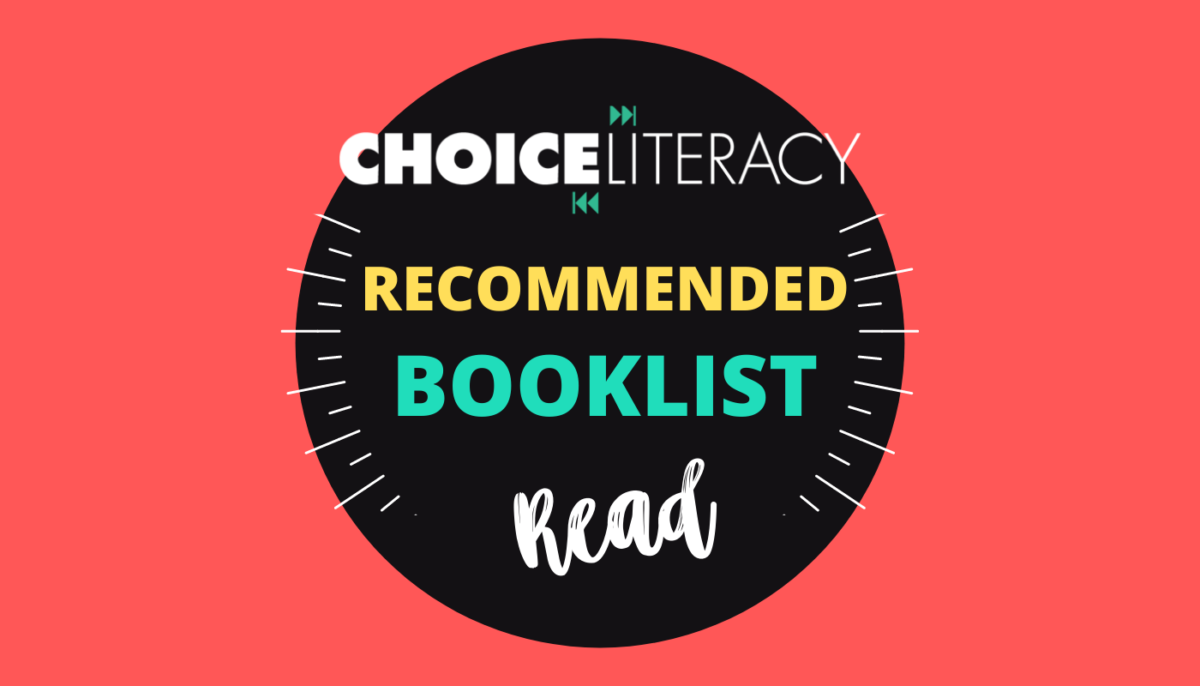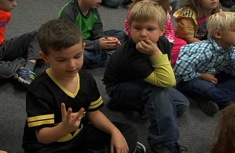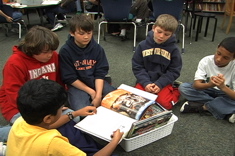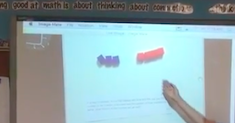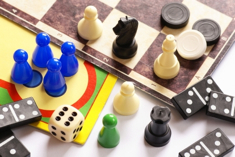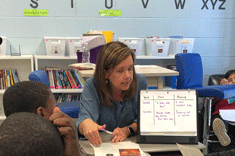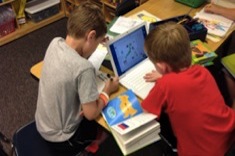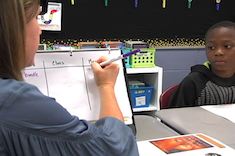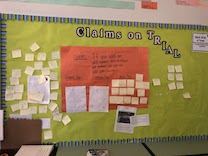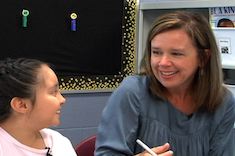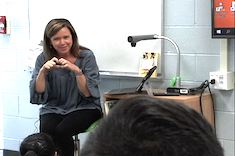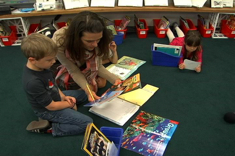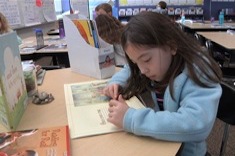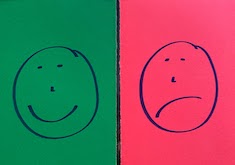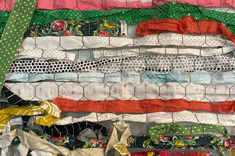4th
Latest Content
QuickTake: Choice in Making Plans for Writing
Ruth Ayres shares the importance of giving students choice when planning their writing projects.
Centering Students’ Brilliance (Booklist)
Stella Villalba is passionate about centering the beauty, brilliance, and genius of all students in our classrooms. She shares an inclusive booklist to inspire and support other educators in doing the same.
Student-Generated Questions to Promote Problem Solving and Modeling with Mathematics
Mallory Messenger shares a process for students to engage and solve a type of intriguing question called Fermi Questions.
Turn and Talk, Then What?
Vivian Chen offers useful tips for seasoned and new teachers when it comes to helping students engage in a turn-and-talk.
Three Ways Student Writers Taught Me How to Use Writing Partnerships
Patty McGee pays attention to how students work as writers to find the teaching points for how to learn to work as writing partners.
Teaching Students to Be Teachers
Tara Barnett and Kate Mills share a process for empowering students to be teachers in partnerships and small-group instruction.
Choral Counting Routine
Mallory Messenger shares ways choral counting provides an opportunity for students to share ideas orally, process language and numbers, and bring out vocabulary within the context of looking for patterns.
Level Two Unlocked: Using the Language of Video Games to Engage Students in the Assessment Experience
Heather Fisher considers the research behind gamified experiences and applies it to a lengthy first-grade phonics assessment. Heather challenges us to gamify assessments to maintain the integrity of the assessment while increasing student engagement.
Moving Beyond Asking Questions
Dana Murphy comes to a lesson about asking questions in a curriculum resource and realizes it is not what her students need. She has designed a lesson to make asking questions more meaningful and useful for her students.
Building Independence in Problem Solving
Mallory Messenger shares the intentional moves needed to help students build independence in problem solving.
Exploring Rural Literature—A Middle-Grade Booklist
Leigh Anne Eck was named the Indiana Rural Teacher of the Year and shares the way she rethought her library through the lens of reflecting her students’ rural identity or revealing rural stereotypes. This middle-grade booklist is an excellent place for us all to begin expanding our classroom libraries.
Letting Informational Mentors Lead the Way
Tara Barnett and Kate Mills share a practical process for using an informational mentor text to support students as readers and writers. Download a note sheet to support students in noticing text structure.
Identifying Story Elements
Dana Murphy shares a whole-class conversation about identifying the climax of the plot. She reminds us that defining story elements is not always clear-cut.
Still Thinking: An Opportunity to Pause and Think Deeply
Jodie Bailey provides a structure to give students more time to think through ideas and problems. By using this practice, students gain ownership of their learning.
The Power of an Anchor Chart in a Digital World
Dana Murphy reminds us of the power of an anchor chart in a digital world.
Listening for Conjectures
Mallory Messenger shares a routine for hearing student conjectures (in math and other subjects) and a process for giving time for the class to prove or disprove the claims. Download a Conjecture—Prove or Disprove Recording Sheet to collect student conjectures in your classroom.
Student Voices First
David Pittman offers practical ways to place student voices first in classrooms in order for their passions, interests, and identities to influence our teaching.
Renewing Energy in the Classroom
Gretchen Schroeder finds ways to increase students’ energy for doing work in her classroom. Her practical tips are useful for all students.
Math Debates: A Powerful Sense-Making Routine
Jodie Bailey shares a powerful practice of math debates for students to explore a problem with discussion and evidence to discover the correct solution.
Engaging Kids in Reading Intervention
Dana Murphy shares ways to make reading intervention a high-interest time for students.
Building a Classroom Library with Students (and Navigating the Tricky Parts)
Tammy Mulligan leads us through the process of giving primary students the reins for building and organizing the classroom library . . . and offers tips for navigating the tricky parts.
Nourish a Sense of Belonging
Dana Murphy shares ways to nourish a sense of belonging in all students.
Knowing Genres
Mandy Robek reflects on the importance of knowing genres and empowering students to be part of the organization process of the classroom library.
Establishing Independent Reading Is Like Planting Seeds
Lisa Mazinas reminds us of the importance of independent reading and how to set it in motion.
Opportunities Offered in Book Shopping
Tara Barnett and Kate Mills remind us of the important opportunities offered during book shopping. Giving yourself permission to slow down and see the opportunities that the routines invite for collaboration and reflection will likely make it feel like you’re maximizing your minutes even more.
Holidays: Where Do They Fit in the Classroom?
Bitsy Parks shares the inspiration and practical ways she celebrates and honors holidays from many cultures in her classroom.
What Matters More
Dana Murphy shares that by asking “What matters most?” she can make decisions that allow her literacy instruction to be student-centered and authentic.
Creating a Classroom Emotional Intelligence Charter
Mandy Robek outlines the process for creating a class Emotional Intelligence Charter. She includes a booklist to help students expand their vocabulary of different emotions.
Befriending Characters in Times of Grief (Booklist)
Melissa Quimby shares a booklist that offers comforting characters to befriend in times of grief. This is a staple for all classrooms.
Bring Me Something Funny (Booklist)
Cathy Mere offers a booklist in response when a teacher asks her to “Bring me something funny.” These books are sure to fill your classroom with lighthearted laughter.
Browse Content By
Type
Category
- Assessment Tools
- Big Fresh Archives
- Booklists
- Choice Numeracy
- Classroom Design
- Common Core
- Community Building
- Conferring
- Content Literacy
- Digital Literacy
- English Language Learners
- Equity
- Family Relations
- Free Samples
- Guiding Groups
- Leadership
- Literacy Coaches
- Mentor Texts
- Minilessons
- New Teacher Mentors
- Podcasts
- Poetry
- Quote Collections
- Reading Strategies
- Self Care
- Struggling and Striving Learners
- Talking and Listening
- Teacher Study Groups
- Teaching Reading
- Teaching Writing
- Word Study and Vocabulary
Author
- Melissa Quimby
- Nawal Qarooni
- Gwen Blumberg
- Julie Cox
- The Lead Learners
- Hannah Tills
- Josie Stewart
- Ruth Metcalfe
- Mallory Messenger
- Becca Burk
- Jodie Bailey
- Vivian Chen
- Mary Brower
- Tiffany Abbott Fuller
- Stephanie Affinito
- Ruth Ayres
- Leigh Anne Eck
- Heather Fisher
- Shari Frost
- Julie Johnson
- Suzy Kaback
- Gigi McAllister
- Shirl McPhillips
- Melanie Meehan
- Cathy Mere
- Debbie Miller
- Tara Barnett and Kate Mills
- Tammy Mulligan
- Dana Murphy
- Bitsy Parks
- David Pittman
- Brenda Power
- Heather Rader
- Matt Renwick
- Mandy Robek
- Christy Rush-Levine
- Gretchen Schroeder
- Jen Schwanke
- Brian Sepe
- Katherine Sokolowski
- Stella Villalba
- Jennifer Vincent
Grade Level
Choice Literacy Membership
Articles
Get full access to all Choice Literacy article content
Videos
Get full access to all Choice Literacy video content
Courses
Access Choice Literacy course curriculum and training


